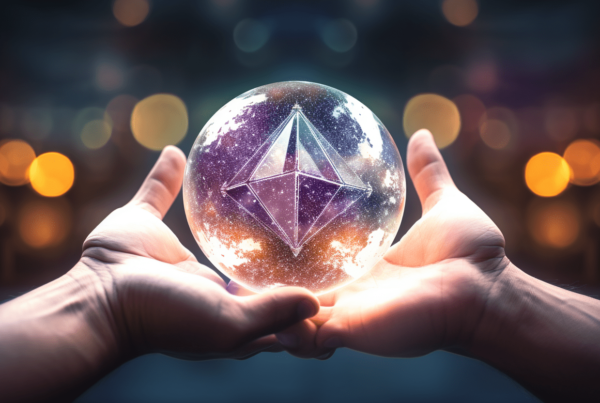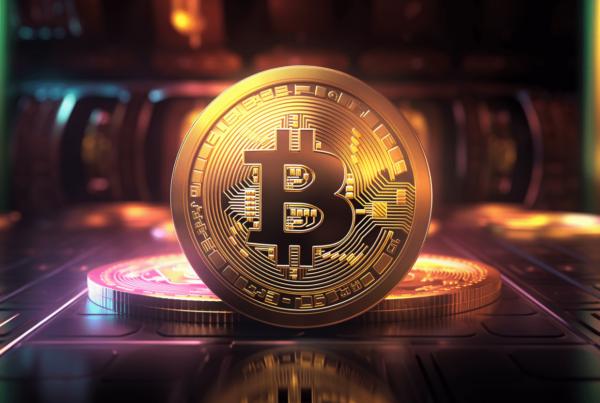
A weekly recap of the largest crypto events and narratives, with an extra dose of insight.
Here’s what we have for you:
-
Ripple to the mooooon
-
Fantom ghost town
-
AAVE GHO
-
GMX V2 fee switch
-
Base Mainnet
-
Polygon’s new token, POL

Ripple makes waves

We are so back. There I said it.
I would guess most people haven’t felt this bullish for this entire year.
This is a direct result of a court ruling on Ripple (XRP). A judge ruled that XRP is not a security. However, there is a caveat in that institutional sales of XRP by Ripple were securities.
XRP itself is just a token, like all other crypto tokens. However, if you sell it to a group of people, promising them they’ll make money through it or own a part of Ripple, then in that instance, it becomes a security.
There is a silver lining here. Programmatic sales, for example, an IEO, where you have no clue whether the exchange, some market maker or Ripple themselves is receiving the money, does not constitute a security.
Being classified as a security is a big no-no. It means that there are a billion laws you must comply with and many limitations surrounding your token.
There are a few key winners here.
- Exchanges
Programmatic sales must be conducted on a marketplace or exchange of some sort. CEXs will be the larger winners here vs DEXs, given their verified user base that is “safer” in the eyes of the authorities. This is likely also why Coinbase pumped an incredible 33% in the past five days.
- Projects
Protocols finally get some regulatory clarity on what is a security or not. Sure, this now means that there are pretty clear-cut cases on when a token is a security, but it also means that you don’t have to keep thinking if the SEC is coming after you for doing something. You know upfront the consequences of whatever you do with your token.
- Users
If a protocol selling its tokens to institutions counts as a security, a protocol may sell or distribute more of its token to users fairly. This means we get more opportunities to “invest” earlier and perhaps even more airdrops.
All in all, there’s good and evil in this decision. But there is an overwhelming winner here. Crypto. As we get even more regulatory clarity, expect that to support prices going up, along with other catalysts such as the spot ETF.
– RektRadar

Fantom = Phantom ghost town


We have a new crypto winner in addition to North Korea’s Lazarus group. It’s the CCP.
Remember when Multichain’s CEO disappeared in May?
Well, he was taken away by Chinese police and has been out of contact with the Multichain team ever since.
We wrote about this last week, but Multichain got hacked, and everything was drained.
It turns out, that the actual story is a complete mess involving Multichain CEO Zhaojun’s family, his lawyer, his sister, and the police. Between all of this, we learned that all MPC node servers were running under Zhaojun’s personal account, so quite literally, Multichain was controlled by him. And then, someone transferred all the assets during the hack, and Zhaojun’s sister transferred the rest for “asset preservation.”
If it seems like a bit of a shit show, that’s because it is.
Fantom’s TVL has dropped from a stunning peak of $7.788B to $69.04M, likely performing worse than your worst bag from the bull market.
There’s a lesson here: a chain should not trust another centralized bridge with all the assets issued on its chain. Or, at the very least, if the bridge is going to be centralised, make it a bridge that you control.

AAVE GHO
-
It’s finally GHO time. After a governance vote that was delayed for quite some time, Aave’s stablecoin GHO finally went live on July 15.
-
GHO joins the likes of crvUSD, eUSD, and the millions of other LST-backed stablecoins that exist these days. So far, crvUSD has shown impressive growth, reaching a market cap of $100M, likely due to its ability to incentivize liquidity pools through veCRV.
GMX V2 Fee Split
-
Currently, 70% of GMX fees go to GLP holders (liquidity providers) and 30% to GMX holders (governance token). A new proposal is live, proposing that 10% of all fees be paid to a DAO treasury, which means that GLP/GMX rewards will be reduced.
-
These funds can be used for protocol development/maintenance, establishing risk committees, funding legal reserves and ecosystem activities, and more. I doubt GMX holders vote to decrease the fees they and liquidity providers receive.
Base Mainnet
-
On July 13th, Base Mainnet opened for builders. General availability will be in early August, and I foresee a lot of existing protocols deploying there.
-
I would keenly pay attention to what kind of ecosystem Base develops, considering they are “managed” by a centralised US-based exchange. This could be a key area to watch as to what the future of DeFi will look like.

Polygon’s new token
New token is shiny—our two brain cells like shiny. PEPE 2.0 is better than PEPE 1.0.
New tokens are sometimes good. For example, Ribbon’s proposal for a 1:1 swap from RBN to AEVO is probably a good idea considering it makes emissions zero. Mantle’s 1:1 swap from BIT to MNT is also a good idea for branding purposes and causes $1.5B of BIT tokens to be burned.
I am not too sure about Polygon’s new token, POL.
First of all, Polygon loves using its marketing buzzwords. POL will be a HYPERPRODUCTIVE token, whatever that means. To be serious for a second here, it means that holders can become validators and receive rewards, but they can validate multiple chains, and chains can offer multiple roles.
A key difference is that the new token’s max supply is uncapped, unlike MATIC, which is capped at 10B tokens. There will be a 1% inflation rate for the DAO treasury and validator rewards. This means that inflationary pressure may be more than before.
Another hilarious point of the new token’s whitepaper is that they used a price of $5 for the new POL token in their calculations. A casual 5x from MATIC’s current prices.
You have to dig deep and be in the weeds whenever a protocol makes a significant announcement like this. Even if they have no ill intentions, there is always alpha by diving deeper. In this case, for example, there is no max supply, and all economic calculations were based on an elevated token price. Polygon is also bringing the concept of “restaking” or validating for multiple chains with one token into the game. And that’s worth paying attention to.
If that’s all too complicated for you, that’s why you signed up for this newsletter. Consider getting your friends to sign up too at rektradar.com
Which content do you like better?
Just click on which one you like more






